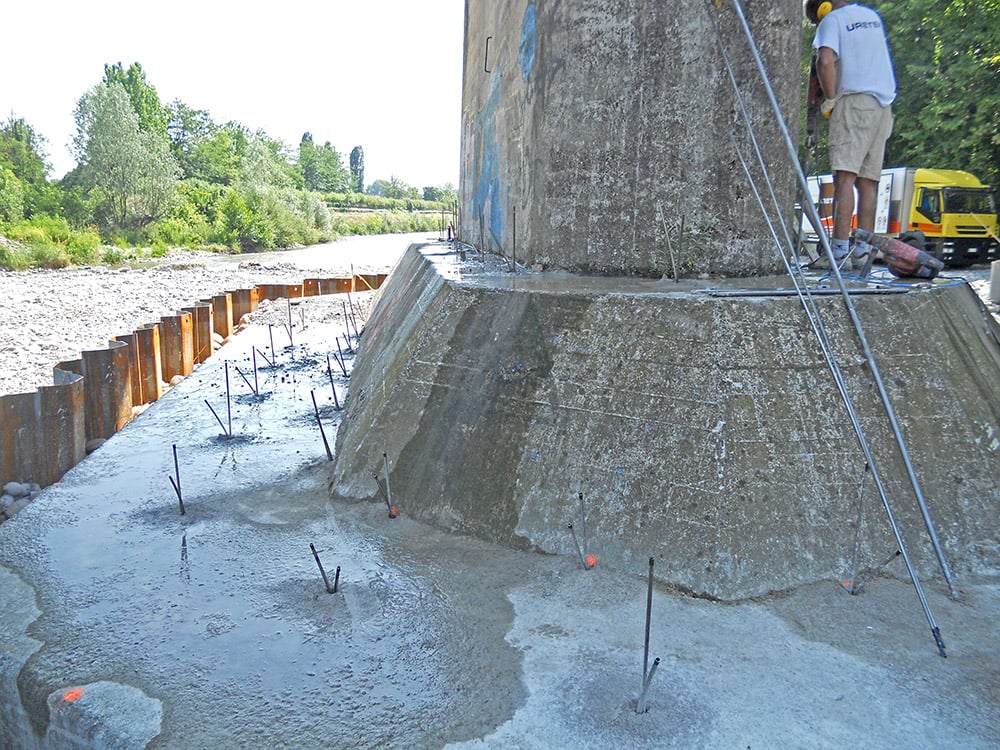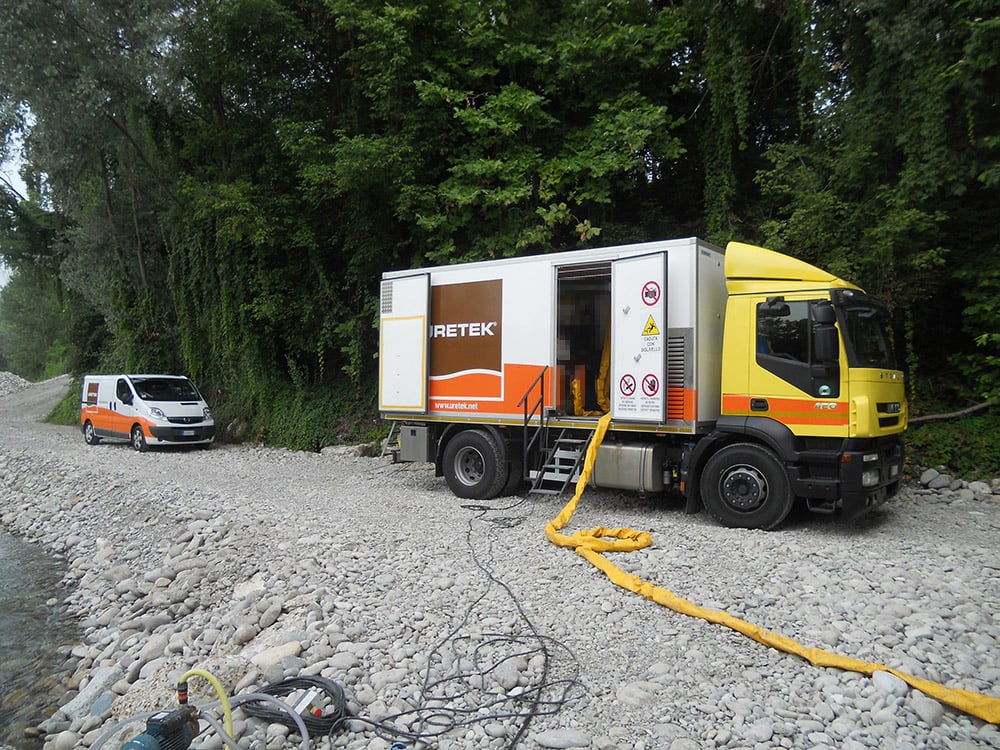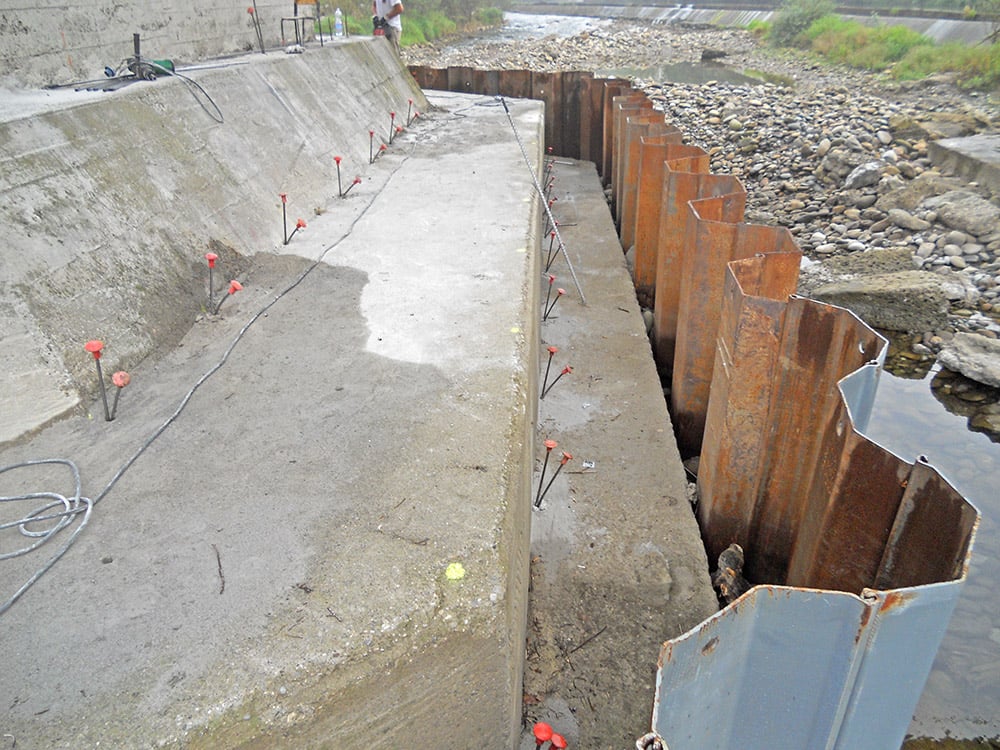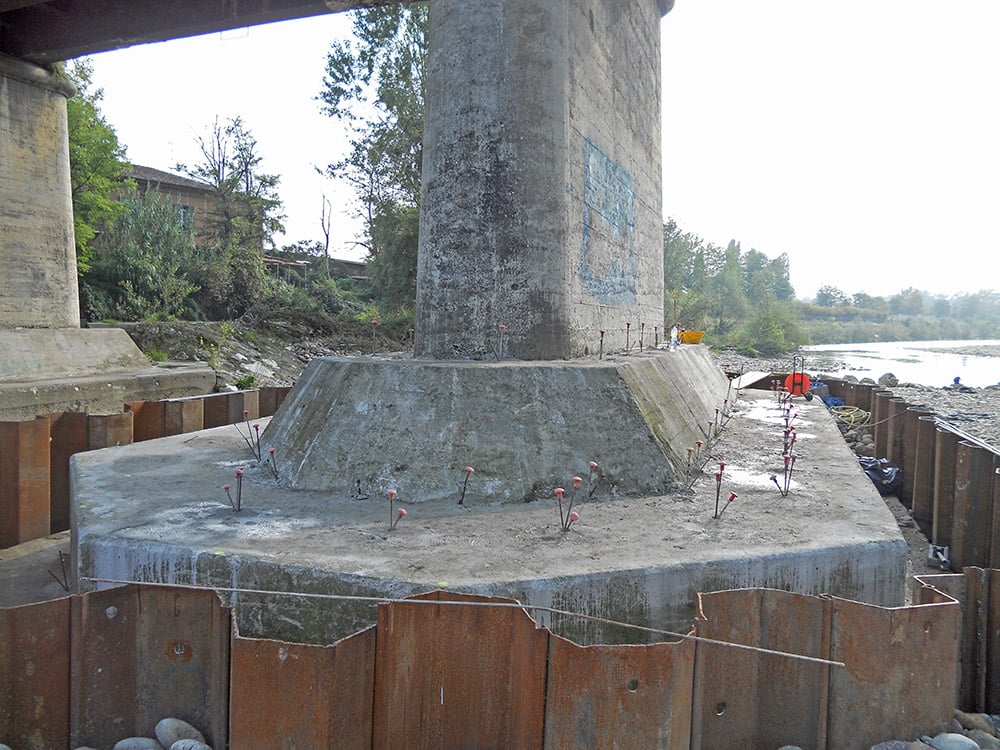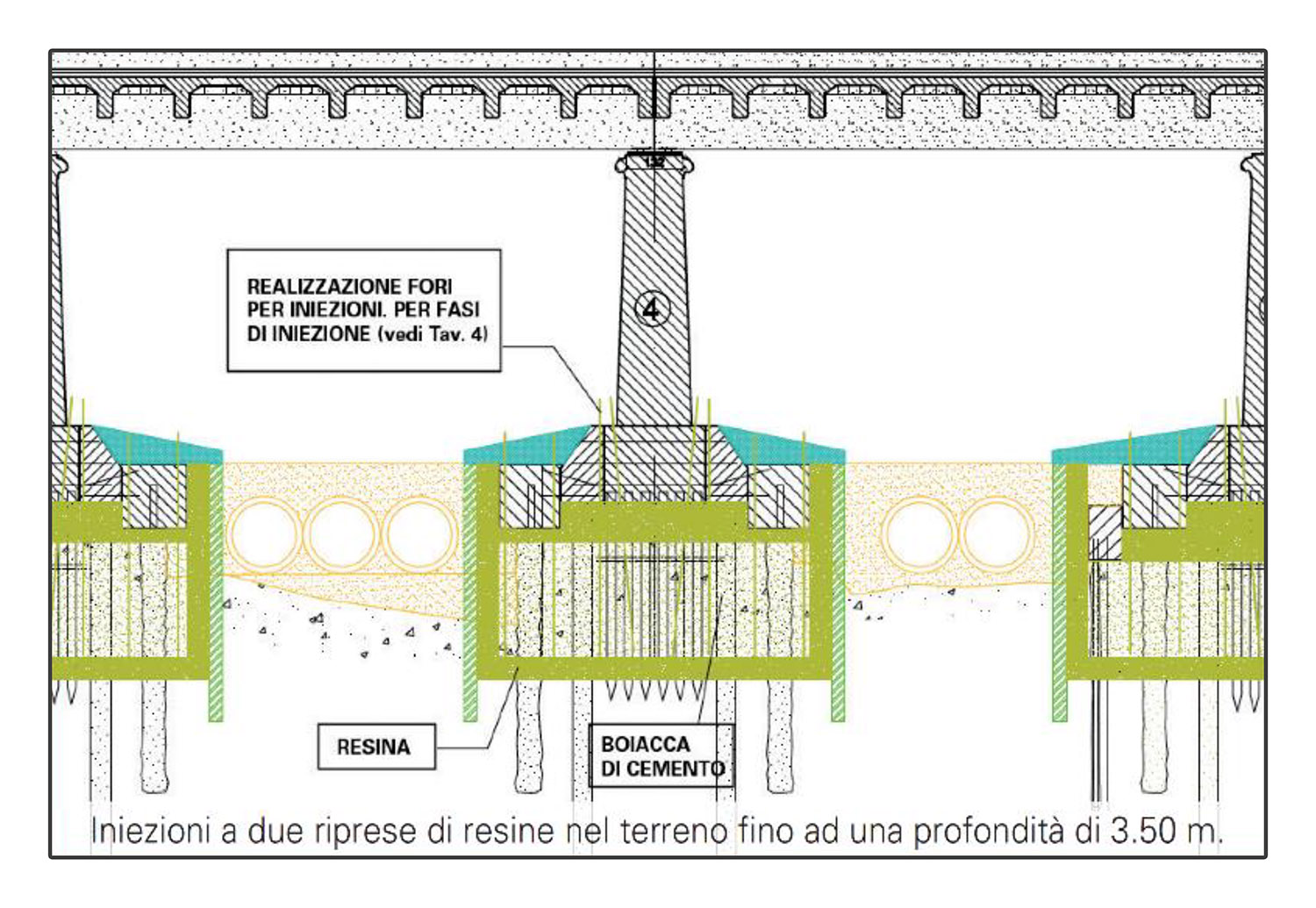The bridge is located on provincial road national road 11 Padana Superiore at km 173.743 in the municipality of Cassano d’Adda, in the Province of Milan.
THE PROBLEM
Over time, water had washed away the foundation soil of the piles, which caused concentrated subsidence, especially for 3 of the 5 piles. This subsidence led to breakage, with plastic behaviour of the concrete (later rebuilt) and weakened steel (later replaced with FRP).
Why the Uretek solution was chosen:
- Speed: Careful planning and programming of the times allowed the work to be completed in a relatively short time;
- Competitive prices;
- Non-invasive: The intervention proposed by Uretek did not require excavations or masonry work, and it did not dirty the area or produce waste;
- Continuous monitoring of the work: Both during and after the intervention, the activities were subject to real-time control by highly qualified personnel using advanced laser technology;
- Application of the exclusive Uretek Deep Injections® technology With the special Uretek Geoplus® expanding resin with high swelling pressure, the soil is compacted and the structures stabilized;
- Respect for the environment Above-ground mixing of the Uretek® resin creates a final inert product that does not release solvents into the soil or possible water tables in the area.
THE SOLUTION
To consolidate the foundation soil, we applied the Uretek Deep Injections® method (European patent no. 0851064), featuring low invasiveness and quick implementation. With injections of the special Uretek Geoplus® expanding resin into the ground, the foundation soil thickens at various depths. The scope of the compression and consolidation is to improve the mechanical properties of the ground under the three piles on the right bank of the Adda River, for a total of about 1100 m³.
Specifically, the driven sheet piles confined the terrain, allowing the polyurethane resin to expand and compacting the surrounding solid volume with the resulting increase in load-bearing capacity.
For each base, we drilled 4 rows of holes around the pile. The spacing between the holes was equal to 0.80 metres. We verified the success of the intervention by making 6 comparative dynamic penetration tests (3 before and 3 after injection) to measure the increase in mechanical parameters of the volumes of soil treated with injections. Eighteen days of work were required for the intervention.
